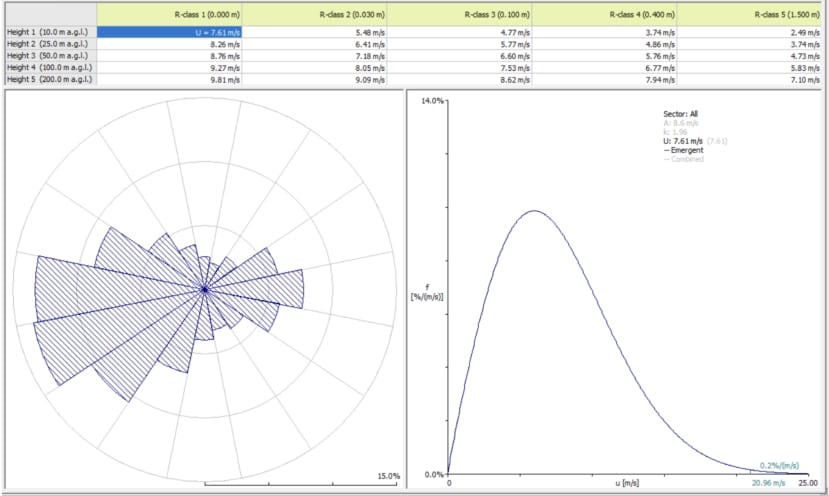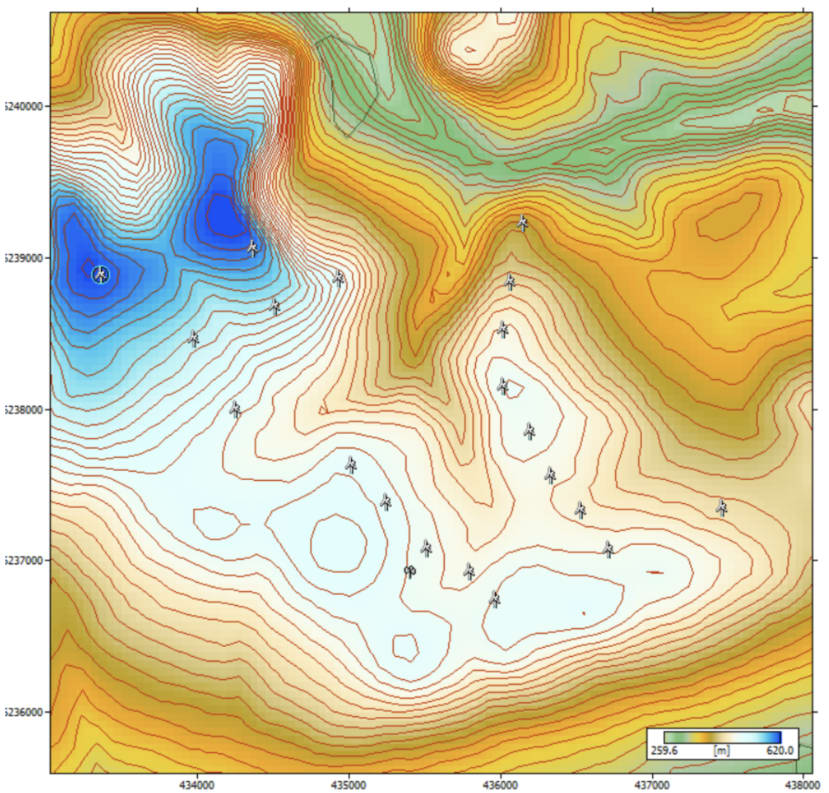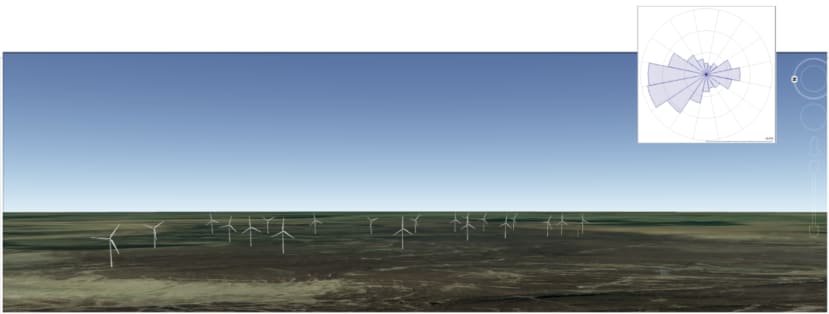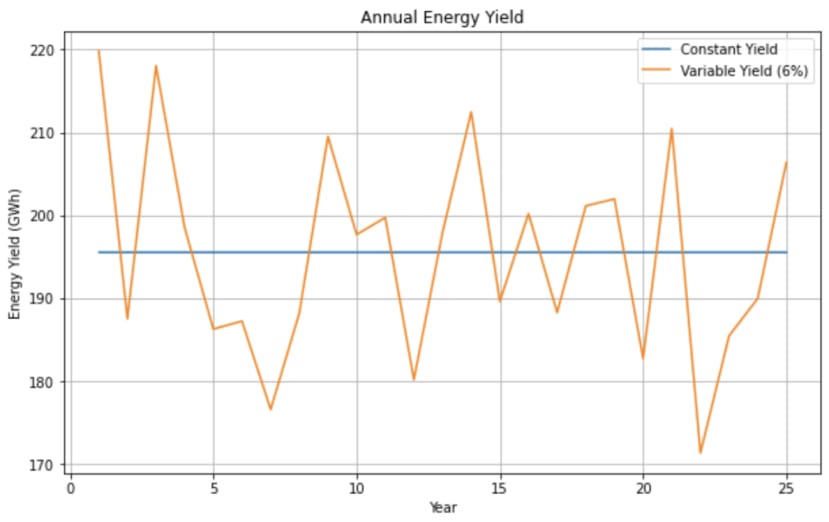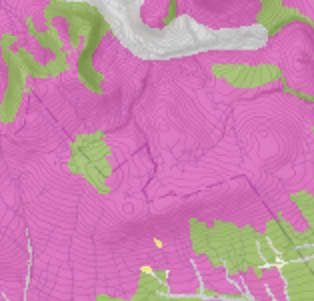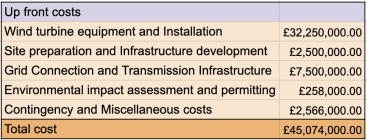AASMG Wind Power Solutions - Wind Farm Proposal
Follow articleHow do you feel about this article? Help us to provide better content for you.
Thank you! Your feedback has been received.
There was a problem submitting your feedback, please try again later.
What do you think of this article?
Our aim at AASMG Wind Power Solutions is to design economically, socially, and environmentally beneficial wind farms for the UK, beginning with a proposed wind farm north of Stirling.
The proposed development consists of 20 turbines at a power rating of 2.5 MW each, on favourable land in regards to wind climate, social and environmental impacts, and political support. Funding will be provided through a bank loan of £45.1 million, paid back over a period of 9 years at an interest rate of 1%.
AASMG Wind Power Solutions is a student design team run by Anna Clare Danby, Ganga Gopakumar Shalini, Ashleen Daly, Shubham R Bagewadi, and Aniruddh Chhatre.
Site Selection
The first step in our design process was to make the critical decision of site selection. Location is the most important factor of a wind farm, as it determines the success of every subsequent design choice, and directly affects the technical, environmental, and social feasibility. As we began researching various potential locations, we took the following factors into account:
- Wind resource
The ideal site will have the greatest wind speed at hub height, which we compared at a height of 100 m. Using WAsP, we measured the mean wind speed at hub height in each location and found a range of 9.13-10.44 m/s.
- Land buffers
Land buffer is a general descriptor of the farm's terrain, encompassing overall land area, hills, proximity to houses, buildings, other wind farms, and any other miscellaneous sites. Ideally, the site covers a large area and has well-oriented hills, as wind speed increases as it passes over hills, but turbines cannot be placed on a slope greater than roughly 10-15%. Therefore the arrangement of hills must result in a greater area along the crest of the hills, with less area along the slope. Nearby buildings and special sites can cause issues, as we don’t want to disrupt the community and its residents. Building turbines too close to houses can cause disrupting shadow flicker due to the rotating blades, as well as slight background noise, and the site would ideally be placed far from any such areas. Neighbouring wind farms can have both positive and negative effects, as they can decrease the wind quality available, but can provide essential information on how suited the terrain is to a wind farm as well as easy access to the site.
- Environmental impacts
Environmental responsibility is a key aspect of sustainable energy, so examining the environmental impact at each location was a key consideration. We prioritised sites with low carbon content soil and low bird and bat populations, that does not sit too close to a national park and is not heavily forested so as to minimise deforestation.
- Social impacts
Community support is essential to the success of a wind farm and the integrity of our company. We considered the social impacts in terms of proximity to nearby houses and how the farm will affect them, how the community currently feels about the development of wind farms, the employment statistics of the community and what jobs we can create, and how we can give back to the community through funding. Additionally, we looked at the census data and political attitudes of the area to gain a better view of community composition and values.
- Scientific and historical sites
The UK has a large number of Sites of Special Scientific Interest (SSSI) and historical sites, which cannot be disturbed by a wind farm. Some locations that were considered were listed as likely to be impacted by nearby SSSI which would be a significant barrier in design, as would close proximity to a historical site.
- Access to roads and electrical grid
Regardless of the location selected, a great deal of funding is going to have to go towards connecting the farm to the electrical grid and building roads to access the farm. The less road we are required to construct, and the closer the site is to an existing substation of an acceptable voltage capacity, the more feasible the location.
Considering the wide range of factors impacting site selection, there was no perfect choice for our proposed wind farm, and we had to weigh priorities when it came to choosing from the six possible locations. Our first considerations were land buffers and grid connection, and ruled out locations 1 and 4. In considering our remaining four locations, we looked further in depth at the environmental and social aspects, before making our final decision based on a combination of all factors.
Site Selection Justification
After a great deal of deliberation, we chose location 3, just north of Stirling, Scotland. This decision was made because of its proximity to a neighbouring wind farm, barren nature, and politics of the local council.
The proposed development will directly border a large existing wind farm called Braes of Doune, commissioned in 2007. This farm gives us road access to the site and minimises the length of road we will need to build. This also means that we will not be interrupting an ‘unblemished’ view, as we will essentially be expanding an existing farm, and the community is already accustomed to living near a wind farm.
The proposed site is quite barren, both in terms of nature and developments, providing the free space necessary to build unobstructed. The location requires no deforestation and there are no special sites to avoid for historical or scientific reasons. The nearest SSSI, the Glenartney Juniper Wood Biological Site, which must be avoided is 4 km away from the border of the farm and the nearest historical site, a war memorial in Callander, is 10 km away. The neighbouring farm is considered to be within a zone of lowest natural heritage sensitivity, clearing the site for any historical issues. Similar to the lack of special sites, there is a lack of development on and near the farm, and the nearest dwelling is 1.5 km from the border of the farm, with the next nearest being 3 km away. A resident of the area has expressed concerns regarding shadow flicker and noise, but the turbines will be placed sufficiently far away to negate this issue.
Approval for this development will go through the Scottish government, which is made up of majority SNP, who has set a target to generate 50% of Scotland’s overall energy consumption through renewable sources by 2030, aiming for net zero by 2045. This support will be key in the approval process, especially when considering that three of the four Stirling North Councillors are on the "Environmental, Transport and Net Zero Committee", likely providing political support for the project.
Technical Summary
The proposed wind farm has been designed to operate with a capacity of 50 MW using 20 turbines at 2.5 MW power rating each with 100 m rotor diameter, and is connected to the electrical grid through the nearby 132KV substation in Stirling. Initially, the site was examined using WAsP software and Google Earth, and was designed to not interfere with the neighbouring existing wind farm.
The following figure shows the wind rose of the selected site on the left, describing the magnitude and direction of the wind at a height of 100m above ground and shows that the predominant wind speed direction is from the south-west, as well as the wind speed frequency to the right.
After analysing the wind climate, the turbines were placed to maximise energy yield. The following figure shows the turbine placement with map overlays of elevation and wind speed, and a mock-up of the farm from the predominant wind speed direction.
Once the turbines were placed, an energy yield analysis was completed, resulting in an average yield of roughly 196 GWh. The full energy yield analysis of the 25 year lifespan of the farm is detailed in the figure below.
This result shows that this development has the capability to power 65,000 homes, or 2% of Scottish households.
Environmental Impact
The two most significant environmental concerns relevant to this development are the impacts on bird life and the carbon emissions related to the soil type of the site. We have specifically researched these two factors, and will also invest in a full Environmental Impact Assessment at a cost of £258,000.
Bird Fatality Assessment
A comprehensive study at the existing Braes of Doune Wind farm revealed that the number of birds killed annually due to turbine collisions was approximately 1.28. This rate aligned with pre-construction Collision Risk Modelling work, which provided similar estimates, confirming that the employed turbine search method was appropriate for detecting bird fatalities at the wind farm. While the study primarily focused on birds, it acknowledged the presence of bats in the wind farm area. Based on existing wind farm data, it was determined that turbine shutdown during peak bat activity hours will not be necessary. However, ongoing monitoring of bat activity remains a priority to ensure their well-being and safeguard against any unforeseen impacts.
Soil Concerns
One of the primary environmental concerns associated with wind farm construction is the disturbance of carbon-rich soil, particularly in peatland areas. The chosen location is rich with class 1 and class 5 peat soil, represented by the pink and green areas in the soil data map of the site below.
To mitigate this issue, we will be using piled turbine foundations, which significantly reduce soil disturbance by reducing the need for extensive excavation. We will also apply for the Peatland ACTION Funding through the Scottish government, specifically to be used to implement revegetation that can ensure early protection against erosion. Due to our development, this land will be prime for peatland development research, and we plan to fund a peatland research project at the University of Edinburgh.
To quantifiably determine the impact of this development on carbon emissions, we have completed a carbon saving calculation to weigh the additional carbon emissions against carbon savings of the generated energy. The carbon payback period, a measure of how long it will take before the carbon reductions outweigh the emissions, was calculated to be only 1.7 years, proving that the development will still have a positive impact on the environment after the impacts of peatland carbon emission.
Social Impact
Making a positive social impact on the community is of high importance to us, and as discussed earlier, is part of the reason for choosing location 3. Based on the Stirling Council planning policy for wind energy developments, we don't need a full equality impact assessment, but we have completed a partial social impact assessment. Residents had concerns about shadow flicker and noise, and we are able to build the turbines 5 times further away from the nearest house than the minimum allowable distance, and 10 times further away from the next closest home, eliminating shadow flicker and noise concerns. Another concern is construction traffic noise, so we will be implementing proper management measures to mitigate these effects based on time of day and frequency of traffic.
There are multiple ways this development will benefit the community. The existing wind farm is visible from a walking path, so we plan to extend this path to encourage both tourism and activity within the community, as well as eventually use these paths for educational tours of both the local area and the wind farm. There will be economical advantages, as landowners will be receiving rental income for land that would otherwise be poor quality agricultural land, and the construction phase will be creating jobs for the area. The most recent census found that roughly 12% of employed Stirling residents work in skilled trades such as construction, this is a significant portion of the population that we can create new jobs for. Finally, we will provide monetary compensation to the community at a value of £10,000 per year through community initiatives detailed in the final summary.
Financial Summary
The development of a wind farm involves careful financial planning to ensure successful implementation. Due to the scale of this project, we will be seeking a financial loan of £45.1 million at an interest rate of 1% with a payback period of 9 years to cover up-front expenditures. An examination of payback over a 25-year period shows a total profit of £156,779,808 which will be invested in future wind farms and research projects. The following tables detail the estimated costs and revenue of the farm.
Summary
Due to the overall positive impact this farm will have on the surrounding community and environment, in addition to the financial gain, we believe this wind farm to be a worthwhile endeavour, and we are very excited about its potential.

